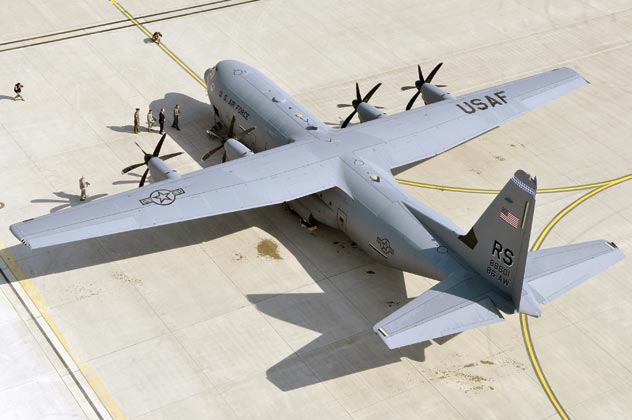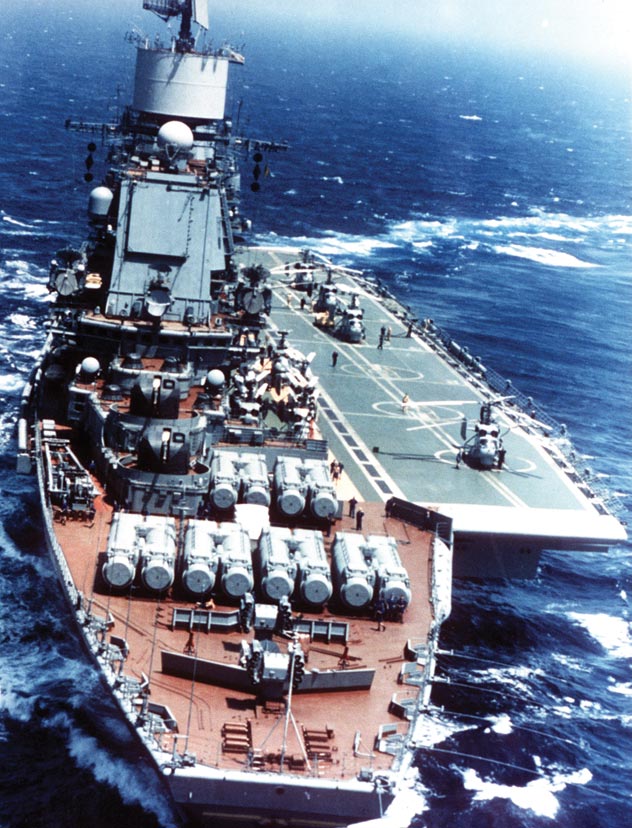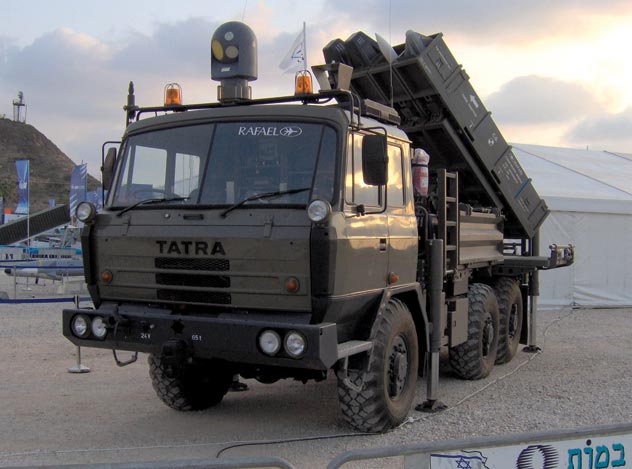SUBCONTINENT
Another Arms Race?
India's Defense Buying Spree
Tense relations between archrivals India and Pakistan and China’s push for strategic space is leading to an arms race, and India is the world’s second largest arms buyer in the $30 billion international arms bazaar, writes Siddharth Srivastava.

(Above): A C-130J Super Hercules arrived at Ramstein Air Base, Germany. [U.S. AIR FORCE | STEPHEN J. OTERO photo]
The conflict situation between nuclear neighbors India and Pakistan and the competition for strategic space between India and China in the Asian region has fed a substantial arms race for a while. As current tensions remain at an alarming level, the arms race rages on.
This has been reiterated by the Stockholm International Peace Research Institute, a monitor of the annual $30 billion international arms trade, in its report for 2009.
SIPRI has said that India is the world’s second-largest arms buyer over the five-year period from 2005-2009, importing 7 percent of the world’s arms exports. The top spot went to China, with 9 percent of the world’s total arms imports.
India’s defense procurement and modernization processes are notorious for being slow, mired in red tape, corruption, middlemen and a lack of long-term strategic planning.
An example of this is the country’s unsuccessful quest to procure aircraft carriers internationally or build indigenous aircraft carriers.
Delays have meant that India’s five-decades-old sole aircraft carrier INS Viraat, which according to earlier plans should have been decommissioned by now, has been refitted to operate for five more years, by which time India hopes to procure more sea carriers.
According to SIPRI, in all likelihood India will top next year’s five-year rolling average, as China is turning self sufficient in arms even as India’s defense modernization is mostly import driven with the domestic armament industry continuing to be at an incipient stage.
According to SIPRI, from 2005-2009, India’s annual arms imports doubled: $1.04 billion (2005); $1.25 billion (2006); $2.2 billion (2007); $1.8 billion (2008) and $2.1 billion (2009).
India has also made a definitive turn away from Russia to other countries such as Israel and America to procure arms, apart from long time partners France and the U.K.
The United States, presently India’s sixth-biggest arms supplier, will likely be among the top three suppliers alongside Israel and Russia in the next couple of years.
Ties between India and America have become closer in the wake of a strategic shift in the relations between the two countries over the last couple of years that also resulted in the signing of the landmark civilian nuclear deal between the two countries.
America has been promoting India as a counterweight to China in the region, apart from tapping new business opportunities such as nuclear energy generation prospects and defense.
The big arms deals inked with America include 6 C-130J Super Hercules aircraft for almost $1 billion (2007) and 8 Boeing P-8I planes for over $2 billion (2009). India has also acquired Airborne Early Warning Air Craft, Hawkeye E-2D, developed by U.S. firm Northrop Grumman.
Deals with Israel include 3 Phalcon AWACS for over $1 billion (2004) and a $2.5 billion project to jointly develop medium-range surface-to-air missile systems (2009). India and Israel have finalized deals for the Barak-8 Naval air-defense system, and the Spyder surface-to-air missile system.

(Above): The erstwhile Soviet aircraft carrier Baku. It was decommissioned and renamed Admiral Gorshkov before being sold to India.
France has been involved in supplying and building 6 Scorpene submarines, a $4.5 billion project (2005).
Russia’s stakes in India’s defense continues to be high with the $1.5 billion aircraft carrier Admiral Gorshkov and MiG fighter package deal (now nearly doubled due to increased costs of the aircraft carrier’s refit) and 230 Sukhoi-30MKI fighter jets for $8.5 billion and T-90 tanks.
Britain has been involved in the 66 Hawk Advanced Jet Trainer $2 billion project (2004).
Observers in India say that events such as the Kargil incursion in 1999 during which the country nearly went to war with Pakistan and the November 2008 Mumbai terror attacks have only heightened India’s quest to stockpile arms, mostly acquired from abroad.
Top government officials say that Kargil 1999 was a threshold year in terms of arms acquisition deals by India as prospects of an all-out conflict with Pakistan became a near reality at the time. Such a possibility was repeated again following the Mumbai attacks.
The officials say that in the decade that has followed Kargil India’s total arms purchase deal value (from domestic state owned armament companies and abroad) has crossed $50 billion, with every sign of such momentum being carried over the next decade.
The purchases comprise jet fighters, warships, submarines, radars, tanks, missiles, weapons systems and platforms, mostly from France, Russia, Israel and America over the last couple of years.
Interestingly, India’s arms acquisitions have more than doubled over the last five years from 2004-2009 ($35 billion) compared to 1999-2004 ($15.5 billion), as defense plans of the earlier period due to the Kargil conflict have been followed to fruition.
The Defense Ministry has inked over 450 arms contracts worth over $30 billion within the last three years only.
After the Mumbai terror attacks, India’s defense forces have been impressing upon the political leadership in New Delhi about an inadequate and obsolete arsenal at their disposal.
Reluctance for battle with an ill-prepared army could have resulted in India not launching a quick retaliatory attack on Pakistan in the aftermath of the Mumbai attacks.
It has become increasingly apparent from top officials in the know that the closed-door meetings of top military commanders and political leaders discussed the poor state of the armory (both ammunition and artillery), and that this tilted the balance in favor of not striking at Pakistan.
It was conveyed that any battle with Pakistan could embarrass Indian forces given the state-of-the-art arsenal supplied by China and U.S. at the disposal of Islamabad.
Indeed, the ground is being set for more big acquisitions.
In response to perceived threats following the Mumbai attacks, India’s defense budget (2009-10) was raised by 34 percent since last year to $30 billion, while officials say that defense modernization expenditure should easily scale over $100 billion between the years 2000-2020.
Over $10 billion has been set aside by the government for net capital expenditure for this fiscal (2009-10), clearly indicating the impact of the Mumbai attacks.
India’s new Defense Procurement Policy 2009 came into effect Nov. 1 last year and aims to bring in transparency and probity into arms purchases that have hitherto been mired in red tape and allegations of corruption that have delayed acquisitions.
The DPP 2009 envisages an enhanced role of independent monitors to inspect complaints relating to violations of the Integrity Pact.
Federal Defense Minister A.K. Antony has said, “The review in the procurement policy aims at promoting and facilitating Indian industry and transparency and integrity in defense acquisitions.’’
Big acquisitions in the offing include a $12 billion deal to buy 126 multi-role combat aircrafts. Six global aerospace companies, Lockheed Martin and Boeing from the U.S., Dassault’s Rafale from France, Gripen from Sweden, MiG from Russia and Eurofighter Typhoon, a consortium of British, German, Italian and Spanish companies, are bidding for the jackpot deal.
Other future purchases include a $7 billion project for new-generation submarines after Scorpenes, a $4.5 billion artillery modernization program and $4.5 billion to acquire 800 military and high utility helicopters.

(Above): The Spyder surface-to-air missile system.
Pakistan and China, the two countries from whom India perceives maximum threat also have their big military agendas in place.
Pakistan, as a former Cold War ally of the U.S. and now partner in its war against terror, has continued to receive military aid that has included state-of-the-art F-16 fighters. Pakistan is also assisted by China, whose military prowess is far ahead of India.
In 2006 Pakistan clocked import deals over $5 billion compared to India’s $3.5 billion. China’s officially declared defense budget this year is nearly two and a half times that of India.
Despite crippling infrastructure deficiencies and wide swaths of millions of poor in dire need of the basic social services, government resources, instead of addressing these urgent needs, continue to fuel an arms race in both India and Pakistan that shows no signs of abating.
|